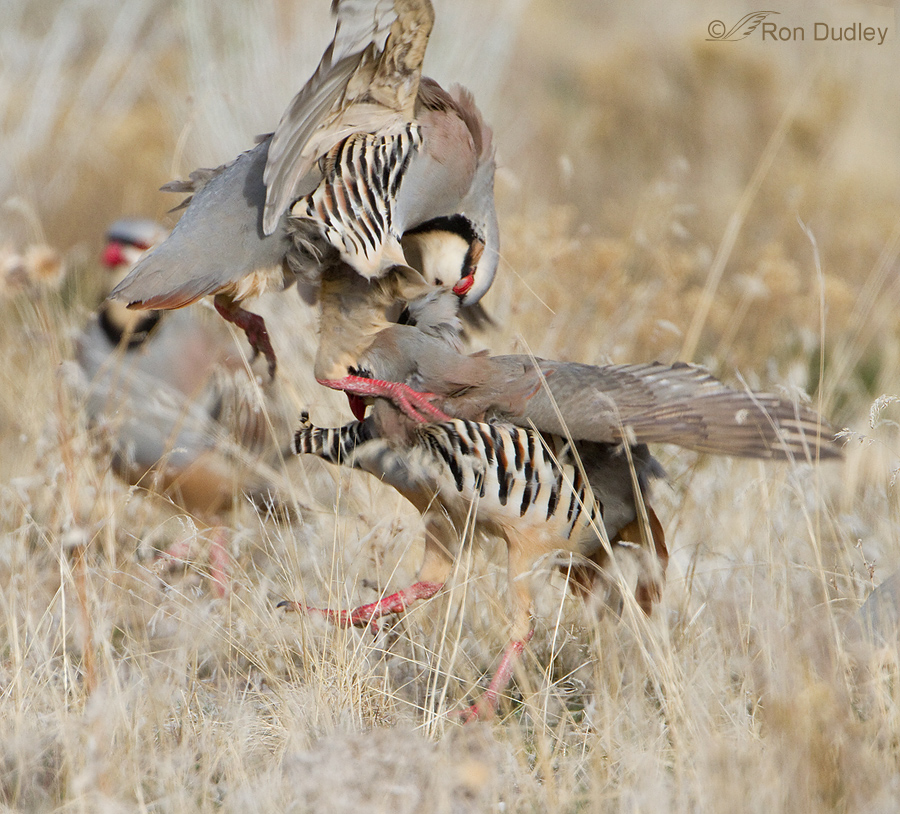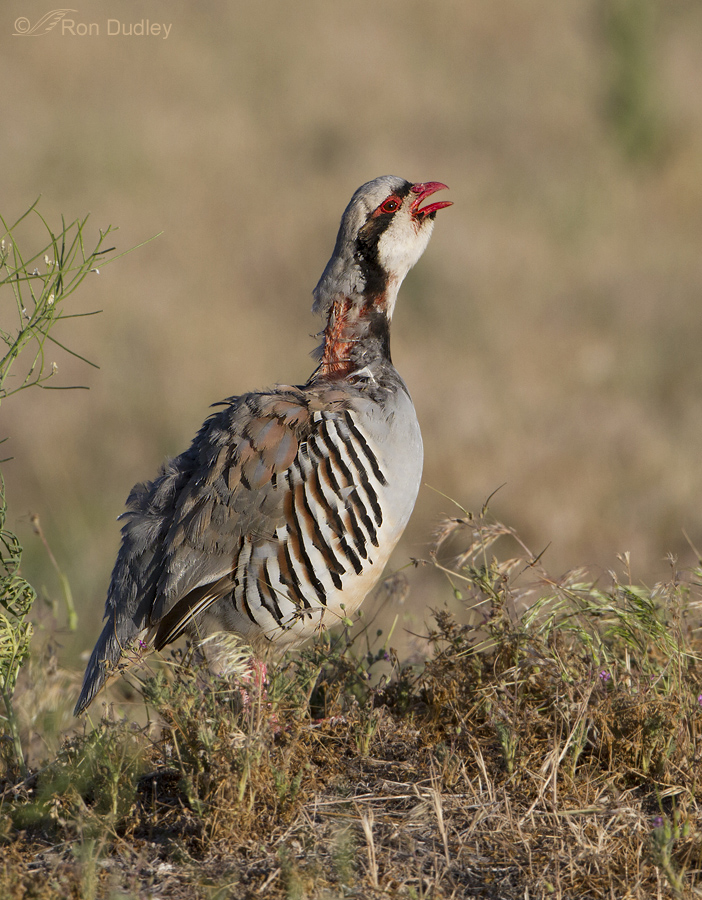I’m still learning stuff about birds from my older photos.

Yesterday morning while I was searching for an image to fill a print request for a client I came across this older photo of a Chukar on Antelope Island. I lingered on it for several minutes because I was enjoying all the colors, including the greens. The setting of most Chukar photos I take doesn’t include any green so I found this photo refreshing, for lack of a better word.
Then my attention went to the dark, splotchy spots on the Chukar’s neck. I remembered that when I took the photo I assumed those spots were early signs of molting or perhaps of “wearing to dark“. But the photo was taken the second week of May so this bird’s plumage should have been relatively fresh, which would eliminate molting and wearing to dark as the cause of the splotchiness.
Then I remembered some of the Chukar fights I’ve seen and photographed. I now believe this Chukar was battle-scarred.

Chukar fights are extraordinarily vicious and these birds seem to have a penchant for trying to rip out the neck feathers of their opponents. In this photo the Chukar at top has a beak-full of the other bird’s lower neck feathers. I remember that feathers were flying during this fight.
Fair warning: The photo below isn’t easy to look at.

This is the most battle-scarred Chukar I’ve ever seen. The image was taken in the second week of June which is earlier than Chukars on the island generally molt, so I’m relatively sure this isn’t some bizarre molting pattern in this individual bird. I very much doubt it’s the result of disease as this bird seemed vigorous and healthy. He’s calling enthusiastically and apparently spoiling for another fight.
The curse of testosterone, I’d say. Or at least one of them.
Ron


So I wonder: will a female be more attracted to a male that is quite beat up, compared to one that isn’t? Sexual attractiveness certainly can be bizarre…
Males will also hang onto females during mating and strip the neck feathers off. Mallard drakes are notorious for striping all the feathers off the hens necks and backs often even killing the hens.
“Males will also hang onto females during mating and strip the neck feathers off.”
Interesting, April. I was unaware of such an extreme behavior in male Chukars.
I used to raise quail an they are just as aggressive they say that birds are living dinosaurs an it shows
Wow Never knew they could do that to each other. I would hope new feathers grow back fast. Maybe they grow in darker making the neck look like battle scars.
Trudy, I suspect they’d grow back pretty fast.
Looks like there’s a little blood around “Rocky Birdboa’s” beak in that last shot, so maybe he gave as good as he got. To keep with the theme and his vocalization in that shot, I’m imagining that he’s calling out, “Adrian!”
“so maybe he gave as good as he got.”
Maybe even better than he got, Marty. He was acting pretty cocky, despite his appearance.
Never knew that these competitive mating/territorial battles could result in such injury.
First time hearing about the term “wearing to dark”.
Another lesson from the professor.
Michael, I believe I’ve published two posts about wearing to dark but both were long ago.
Yow. Thanks for the warning– but I looked anyway, and wished
I hadn’t–at first I thought I was seeing the exposed spine. I wonder
if the bird would survive such wounding, given the possibility of
infection ? Terrible price to pay for only a POSSIBILITY of a mate !
Kris, I think what we’re seeing in that photo is inflamed skin – from so many feathers being plucked.
Great series! Glad I’m not one!
Thanks, Charlotte.
That is brutal. Hard to believe they can cause that much damage. I guess that almost all living breathing creatures on earth battle each other for territory or dominance or mates etc. We know that we certainly do.
PS – Have never seen a Chukar.
Everett, Chukars are pretty common in the right habitat in northern Utah. On the island and elsewhere.
WOW! They DO get vicious! The “neked” necked one looks like there is wire around it’s neck besides being thoroughly plucked?
“looks like there is wire around it’s neck”
It does look like that, doesn’t it Judy. I think that’s just feathers.